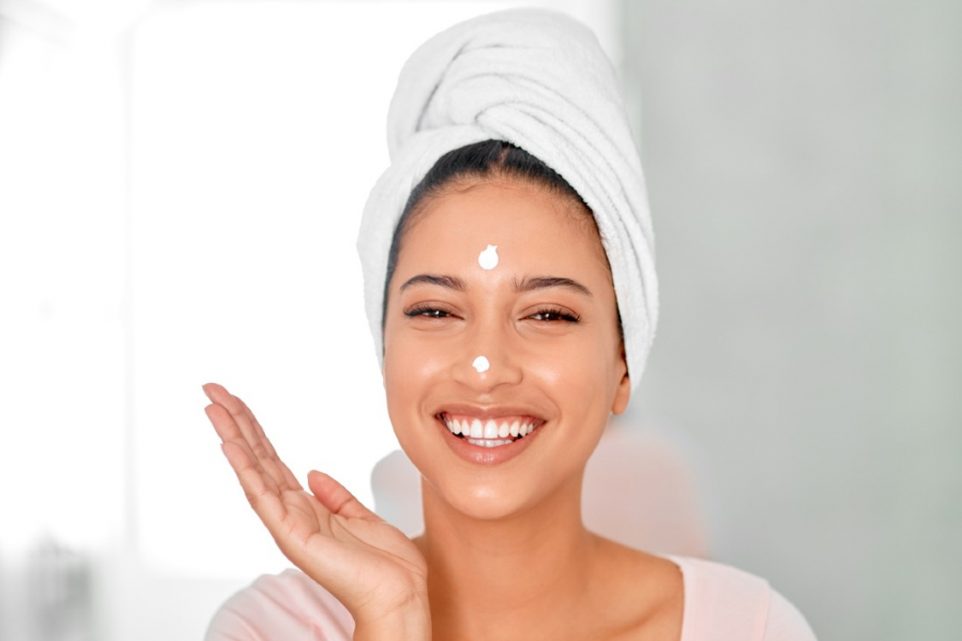3 Different Skincare Routines for Oily Skin

Oily skin is when overactive sebaceous glands produce an excess of sebum. This leads to a shiny complexion and a higher likelihood of clogged pores (AKA acne). And unfortunately, managing oily skin can be a pretty challenging task. But don’t fret! With the help of the right skincare routine, you can keep the excess shine and annoying breakouts at bay.
In this article, we’ll explore three different skincare routines specifically tailored for those with oilier skin types. By incorporating one of these routines into your daily regimen, you should be able to achieve a balanced, healthy, and radiant complexion that’ll help you feel your best.
Routine 1: Cleanse, Exfoliate, and Balance
Step 1: Cleansing
Start your skincare routine by cleansing your face twice a day, morning and night, with a gentle, oil-free cleanser that’s specifically formulated for oily skin. Look for ingredients like salicylic acid, benzoyl peroxide, or tea tree oil, which help to control excess oil production and prevent breakouts. Make sure to thoroughly cleanse your face to remove dirt, impurities, and any traces of makeup.
Step 2: Exfoliation
Exfoliation is essential for oily skin as it helps remove dead skin cells and unclog pores, preventing the buildup of sebum and reducing the occurrence of blackheads and whiteheads. Use a chemical exfoliant containing alpha-hydroxy acids (AHAs) or beta-hydroxy acids (BHAs) one to three times a week (depending on your tolerance) to gently slough off dead skin cells and promote cell turnover.
Step 3: Balance with Toner
After cleansing and exfoliating, use an alcohol-free toner to balance the pH of your skin and remove any remaining impurities.
Step 4: Moisturize
Contrary to popular belief, oily skin still needs moisturization. Opt for a lightweight, oil-free moisturizer that is non-comedogenic, meaning it won’t clog pores. You could also add in a hyaluronic acid serum after cleansing your skin (in place of your toner). Or you could use moisturizers with hyaluronic acid or glycerin, which provide hydration without adding extra oil to the skin.
Routine 2: Mattify, Control, and Protect
Step 1: Mattifying Primer
Before applying makeup, use a mattifying primer for oily skin. This will help control shine and create a smooth canvas for your non-comedogenic foundation or BB cream. Look for primers that contain ingredients like silica or kaolin clay, which absorb excess oil and help your makeup last longer.
Step 2: Oil-Control Products
Incorporate oil-control products into your skincare routine to help regulate sebum production throughout the day. Try using oil-absorbing sheets or blotting papers to gently remove excess oil from the surface of the skin without disturbing your makeup. You could also try using oil-control or mattifying powders to help set your makeup and minimize shine.
Step 3: Sun Protection
Don’t forget to protect your skin from harmful UV rays. Look for oil-free, broad-spectrum sunscreens with an SPF of 30 or higher. Opt for lightweight formulas that won’t feel heavy on the skin. Sunscreens with mattifying properties can also help control excess oil and shine.
Routine 3: Detoxify, Purify, and Nourish
Step 1: Detoxifying Mask
Incorporate a detoxifying mask into your skincare routine once or twice a week to help draw out impurities and excess oil from your pores. Look for clay-based masks containing ingredients like charcoal or bentonite clay, which absorb oil and unclog pores. This step will help keep your skin clear and refreshed.
Step 2: Purifying Serums
Include purifying serums in your routine to target specific concerns such as acne or enlarged pores. Look for serums that contain ingredients like niacinamide or tea tree oil, known for their antibacterial and anti-inflammatory properties. These serums help control oil production, reduce breakouts, and refine the appearance of pores.
Step 3: Nourishing Moisturizer
It’s important to nourish and hydrate the skin properly. Look for lightweight, oil-free moisturizers that contain ingredients like green tea extract or aloe vera. These ingredients provide hydration while soothing and calming the skin. And be sure to choose moisturizers with a gel or light cream texture that absorb quickly without leaving a greasy residue.
Step 4: Weekly Deep Cleansing
In addition to daily cleansing, incorporate a weekly deep cleansing routine to keep your skin clear and free of impurities. Use a gentle exfoliating scrub or a cleansing brush to remove dead skin cells and unclog pores. Be cautious not to over-exfoliate, as this can lead to irritation and increased oil production. Stick to once a week and adjust according to your skin’s needs.
Step 5: Healthy Lifestyle Habits
Skincare routines are not solely dependent on products. Lifestyle habits play a significant role in achieving healthy skin. Maintain a balanced diet rich in fruits, vegetables, and whole grains to nourish your skin from within. Stay hydrated by drinking an adequate amount of water throughout the day. Also, minimize stress levels through relaxation techniques like meditation or yoga, as stress can trigger excess oil production.
Conclusion
Managing oily skin requires a consistent and tailored skincare routine. By following one (or all) of the three routines mentioned above, you can effectively control excess oil, minimize breakouts, and achieve a balanced complexion. Remember, it’s always a good idea to consult with a dermatologist or skincare professional for personalized advice, especially if you have specific skin concerns or sensitivities. So, embrace your unique skin type because, with proper care, you can have healthy and radiant-looking skin.